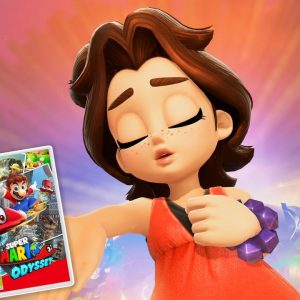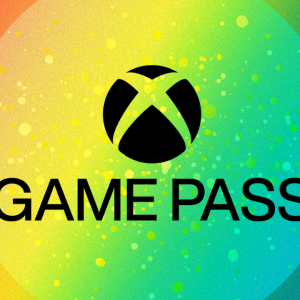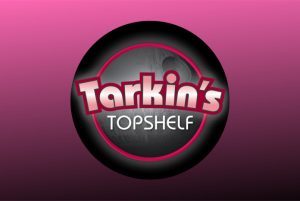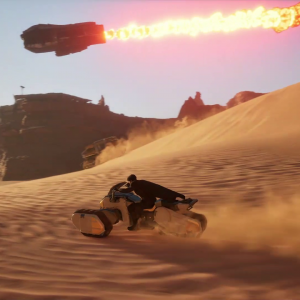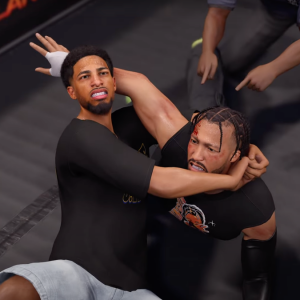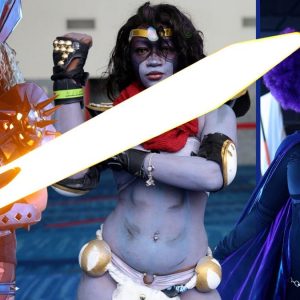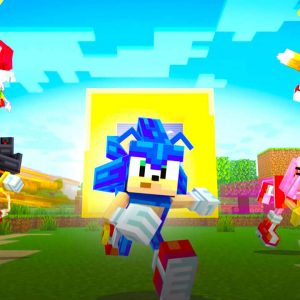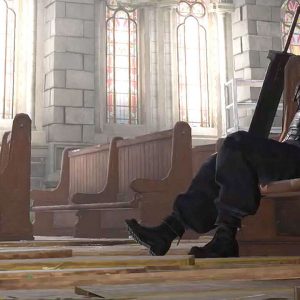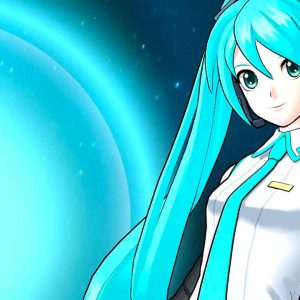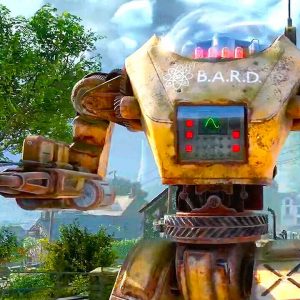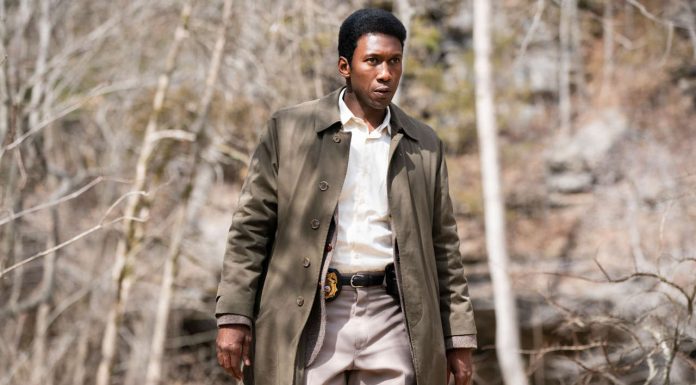On paper, Crash Team Rumble doesn’t seem like it should work. It’s a team-based, strategic platformer that breaks a lot of the rules we associate with other multiplayer games like it. Instead of getting ahead by KOing members of the enemy team, you’re racing to collect 2,000 Wumpa Fruit before them. But while this concoction may seem strange at a glance, it comes together in surprisingly fun fashion. The three hours I was able to spend with Crash Team Rumble as part of a pre-release review session (plus a few more on live servers since launch) isn’t enough to get a full sense of what’s here or how it might hold up over time, but I did come away with a much better understanding of what developer Toys For Bob is going for and a hunger to collect even more Wumpa Fruit.
Rumble’s 4-on-4 matches pit teams of iconic Crash Bandicoot characters against each other. There are currently eight to choose from, each broken into one of three archetypes: Scorers: Crash, Tawna, and Catbat; Blockers: Dingodile, Dr. N. Brio, and Dr. N. Tropy; and Boosters: Coco and Dr. Neo Cortex. It’s a good starting roster – so far I’ve enjoyed playing as any character, and they all feel very different even if they come from the same archetype.
Scorers are, naturally, the best at scoring. They can hold more Wumpa Fruit at one time than the other archetypes, tend to be pretty good at fighting off enemies trying to stop you, and usually have special movement abilities that make them tough to corner. Blockers are good at blocking scorers from scoring. They can sit on the other team’s bank for a long time if played well, with strong offensive capabilities and knack for controlling the space around them. Boosters are a little less straightforward; their job is to support their team, but they do so in a couple of interesting ways.
“
The first is by capturing Gems by simply jumping on them, which is essential because they provide a significant scoring boost. There’s a big difference between turning in Wumpa Fruit normally and turning them in when you control every group of Gems on the map because that means you’re doubling your score. Even capturing at an additional 30% makes a huge difference, and Boosters are custom-built for capturing fights, which can be won and lost in an instant. They excel at keeping other players away from them (or their location), but they’re not just there to capture Gems.
The real game-changer is when you take your Booster – who can collect Relics more quickly than Scorers or Blockers – to the stage-specific ultimate Relic Stations and cash them in for power-ups. There’s only one of these on each of the 10 launch maps, and they’re more expensive than standard Relic Station upgrades that only affect your character, but the rewards are enormous. Just Beachy’s is a Bonus Bank that doubles your Wumpa turn-ins as long as it’s up. City Scrape’s summons TNT drones that chase your enemies. Serenity Gardens’ gets you a Big Bonsai, a tree full of Wumpa Fruit. Others summon dragons, spaceships, sandstorms… there’s a lot. Best of all, each one is specifically tailored to its map’s themes and design, which has helped each and every one I’ve played so far feel unique.
“
All of this adds up to a game that asks you to make a lot of important decisions on the fly during the action, but picking your team composition beforehand matters just as much because you can’t change your mind once the match starts. I love Dingodile; his vacuum sucks up Wumpas and enemies from afar; his spin attack hits hard, can be charged, and holds an area well; and he’s pretty tanky. That said, a team of four Dongodiles is probably not a good idea because his mobility is limited and he can’t keep up with the Scorers in sheer Wumpa collection.
Locking in a character doesn’t mean you’re stuck doing one thing, though. Sure, Dingodile is a Blocker, but his vacuum lets him suck up Wumpa Fruit quickly and he can hold more of them than the average Blocker or Booster, so he can still score in a pinch. Crash’s speed and ability to carry a lot of Wumpa is core to being a Scorer, but he’s also handy in a fight and his Slam and Super Slam attacks work great if you’re trying to control space or KO another player – ideal for double-duty as a Booster or a Blocker. Each character is different: Tawna has a grappling hook for zooming around the map and pulling enemies to her, Dr. N. Tropy can hover and create energy balls that knock opponents away, Coco’s shields can keep other players off of platforms, and so on. I haven’t gotten a chance to really dig into everyone yet, but what’s here is promising, and it’s nice that a character’s specializations don’t stop you from going where you’re most needed. Crash Team Rumble is about adaptation as much as it is filling your role.
Every character also gets a Power that charges up throughout the match. They’re not character specific – you can choose from a list – but they can make all the difference in a close game. The Wumpa Stash builds up over time once you activate it, letting you score big when you turn in Wumpa if you can stay alive long enough. There’s also a refrigerator that will heal any allies within range, the Gasmoxian Guard, whose lightning pulses are great for holding areas or playing keep away, and the Flytrap Spitter, which attacks enemies from range. Matches can be won and lost based on what abilities you choose and when you deploy them. My team stole the final match of our review session because I saved my Gasmoxian Guard until the last second – it knocked the entire enemy team off our bank, allowing us to score for the win.
What I like most about Crash Team Rumble so far, though, is its map design and how it forces you to use your character’s skills. The maps here remind me of arena FPSes like Quake or Unreal. There’s a lot of height to them, and being able to get to where you want to be quickly – and developing routes that maximize your Wumpa pickups, Relic collection, Gem activation, and drop-offs along the way – is crucial to winning. I really enjoyed maximizing my routes through maps, and I can’t wait to perfect them as I spend more time in the full version.
I still have a lot more Crash Team Rumble to play, but I’ve really enjoyed what I’ve seen so far. It’s already clear how much its unique multiplayer structure rewards map knowledge, teamwork, and smart play. I still need to play around with more of the cast, put the unlock systems through their paces, and master the maps, but I’m excited to see what else I discover as I get more comfortable with it. I’ll be back with a final, scored review next week, but until then I’ll be happily scoring Wumpas.
